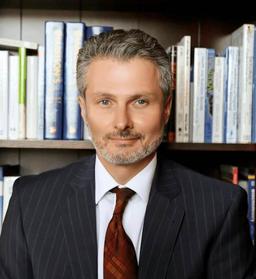Over the past 30 years, Autism Spectrum Disorder (ASD) has gone from a rare and obscure medical curiosity to a common developmental disorder affecting millions of American children. Conventional medical and psychiatric treatments are limited to therapy and a handful of minimally effective drugs. But decades of research and clinical practice from a small group of dedicated practitioners has shown that autism is, in fact, treatable.
ASD affects 1 in 59 children and now comprises 1 percent of the whole population of the United States. Lifetime cost over the entire lifespan of each autistic individual is estimated at nearly $2 million per person. Thirty-five percent of young adults with ASD are unable to work and are dependent on family or public services for survival. Prevalence is projected to increase 15-25 percent in the coming decade, making all these figures even worse. The average American gives this problem very little attention until it enters their lives through an affected family member. At this rate, a larger and larger proportion of Americans will be thinking about it soon.
ASD is a behavioral and neurodevelopmental disorder characterized clinically by delays and qualitative differences in communication and social interactions as well as repetitive behaviors and restricted interests. Currently, it is characterized by the vast majority of healthcare practitioners as a subjective psychiatric diagnosis based on behaviors exhibited in the child rather than an objective medical diagnosis based on measurable core clinical imbalances resulting in their abnormal behaviors. This subtle but powerful difference in diagnosing patients with autism has resulted in profound effects on medical trials. Many of these trials have been plagued with inconsistent results because patients are being selected based on the subjective behaviors they exhibit rather than the objective clinical imbalances they possess that cause or contribute to the behaviors. This effectively reduces the power of the study and dilutes the therapeutic potential of the therapeutic agent being studied.
There is no single cause of autism. Instead, the causes are as varied and diverse as the individuals who are affected. This is the primary reason why the pharmaceutical industry has failed to produce any effective treatments beyond simple symptom control (such as antipsychotics for agitation or stimulants for inattention).
I want to be clear on which ASD individuals I am not referring to. There is a growing number of very high functioning ASD adolescents and adults who can be seen writing long, eloquent social media posts outlining their support for neurodiversity and see no need to change anything in themselves. I commend these individuals for their bravery and the level of function they have achieved.
I am referring to ASD children who are unable to engage in a simple conversation with loved ones and cannot communicate their needs. These children may spend the majority of their day engaged in repetitive, self-stimulatory activities and are frequently unable to go on a simple shopping trip or even sit in a restaurant with their parents without one severe meltdown after another. These are the children who have a very low level of function and without intervention will likely be dependent on others for their survival well into adulthood.
The Role of Genetics
Over the past decade, conventional medicine has directed much of its research efforts and funding toward identifying the genes responsible for autism. Billions of dollars have been spent with no substantial changes in the proportion of patients identified with a clear-cut genetic cause. This misdirection of research resources has resulted in a grave disservice to children with autism. Future generations of children with autism may possibly benefit from this research but the current generation is being marginalized by resource allocation decisions of our current conventional medical model. Effective treatments are available for these children today and with the availability of adequate research dollars, these treatments could be refined and improved at a much quicker pace than is currently happeningThe Functional Medicine Treatment Approach
We start with two key questions:- Is the body and brain getting what it needs to function optimally (i.e. vitamins, minerals, omega-3 fatty acids, healthy clean food, etc.)? Get the good stuff in.
- Is something present in the body and brain that is interfering with its ability to function optimally (i.e. toxins, occult infection, disrupted microbiome, free radicals, cytokines, histamine, etc.)? Get the bad stuff out.
Current Treatment for ASD
The backbone of current treatment for ASD is Applied Behavior Analysis or ABA. This is a form of therapy built upon the principles of operant conditioning and the evidence supports that this therapy is effective for children with ASD. Occupational and speech therapies can also be helpful. All these modalities should be continued as the child and their families work with an experienced practitioner to determine the causes and contributing factors driving the autism.Autism Spectrum Disorder Causes and Contributing Factors
A large and rapidly growing body of research points toward ASD as an inflammatory disease associated with immune dysfunction activated by environmental triggers. The various permutations of these three components then become the causes and/or contributing factors that we connect to the patient’s existing psychiatric diagnosis of ASD. There are a myriad of core clinical imbalances that may directly or indirectly affect the brain function of children with autism.Conclusion
One or more of these factors are present in almost all individuals with autism and it is the intricate interplay of these imbalances which ultimately create the complex clinical presentation of ASD. Dozens of other, less common, imbalances have also been identified as contributors to the complex condition of ASD.Autism is now treatable but we have to displace the outdated psychiatric baggage it brings with it from the 20th century. The optimal approach to treating ASD in the 21st century continues to be early intervention with psychological and educational services (ABA, special education, speech, and occupational therapies) working from the “outside-in” as well as an in-depth functional medicine investigation into the causes and contributing factors working from the “inside-out”.








